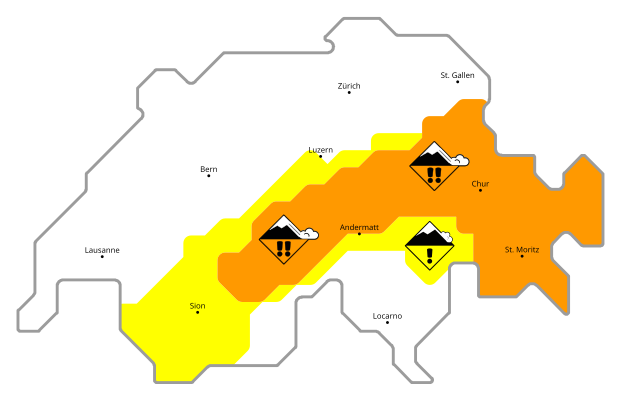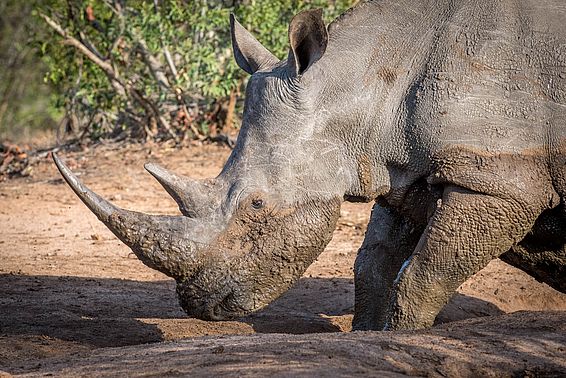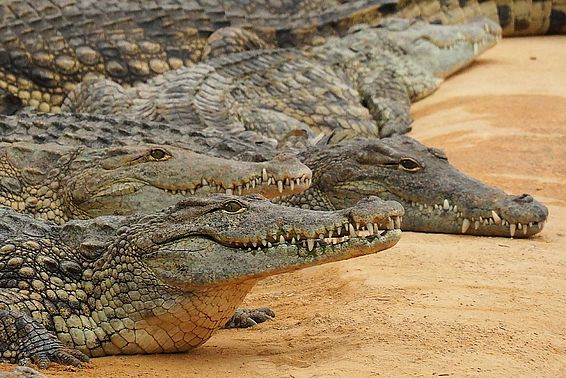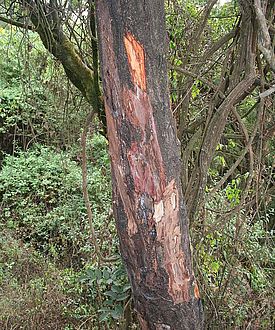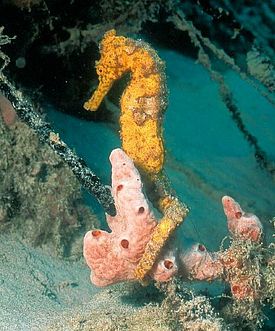03.03.2021 | Beate Kittl | News WSL
March 3 marks the anniversary of the Washington Convention on International Trade in Endangered Species of Wild Fauna and Flora (CITES), which has regulated international trade in endangered species since 1973. WSL biologist Josef Senn heads the scientific expert commission that advises the Swiss CITES enforcement authority. On the occasion of the CITES anniversary, World Wildlife Day on 3 March, we asked him five questions.
1: How does CITES work?
CITES deals exclusively with the international trade in endangered species or parts thereof (animals and plants). It is a set of rules and at the same time a control system. A distinction must be made between legal and illegal trade. In the case of legal trade, exporting states must prove that they are not endangering the wild populations of species listed in one of the two CITES Appendices (*). There is a CITES authority in each country. This authority controls legal trade and, in case of doubt, can commission specialised companies and organisations to monitor plant and animal populations. The controls take place in the wild, where endangered species or parts of them are collected, or in the case of cultivated animal or plant species on the respective farms and plantations.
Illegal activities involve very rare species where any removal from the wild population poses an existential threat to the population. An acute example are the rhino species whose horns are used in Chinese medicine. If countries don't get a grip on this, we won't have any wild rhinos left in ten or 15 years.
2: What is Switzerland's role in CITES?
Switzerland has a somewhat special status in CITES: as Depositary State, it holds all the membership applications and certificates of all countries. In addition, the headquarters of the Secretariat is located in Geneva. Moreover, no other country in the world issues as many CITES certificates as Switzerland. The watch and luxury industry is one of the largest processors of CITES-listed legal products, mostly reptile skins for watch straps, belts, bags or shoes. Switzerland was the first country to introduce e-permitting, i.e. electronically issued permits. Certified and regularly inspected companies can fill them out themselves. Since each bracelet or leather item needs its own permit, this amounts to hundreds of thousands of forms. E-permitting works well, it is much more up to date and transparent than the paper forms used in the past, because any irregularities are noticed immediately.
3: What is your task in this?
Together with eight other people, I form the "Scientific Advisory Committee" for Switzerland. This is an extra-parliamentary expert committee elected by the Federal Council. We suggest to the authorities, for example, how species protection can be improved. They also routinely consult us when, for example, a species listed in Appendix I, for which commercial trade is prohibited, is to be imported with an exemption permit. However, we are only allowed to give advice; the decisions are made by the CITES Secretariat, which is based at the Federal Food Safety and Veterinary Office (FSVO).
4: Which species are traded?
Appendix I includes many trophy hunter targets, including leopards and rhinos. Individual countries grant licences for shooting otherwise highly threatened species in monitored populations. Namibia, for example, allows trophy hunters to shoot five black rhinos per year. Licences are sometimes sold in auctions and can ultimately cost several 100,000 dollars per animal. A good part of the money is used for nature and species conservation, and the rhino - or parts of it - may end up in a Swiss living room. In the best case, trophy hunting benefits the local communities and helps to maintain game populations. One such example is the screw-horned goat, or Markhor, in Pakistan. A shooting permit also costs over 100,000 dollars, and a large part of the money is invested in infrastructure for the local people, for example to build schools or hospitals.
Appendix II contains potentially endangered species or species in high demand. For example, with a CITES permit, it is possible to collect wild clutches of turtles which are prized in hobbyist circles and hatch them in captivity. The idea of this approach is that many more hatchlings would die in the wild than under controlled conditions. A good part of the hatched young animals may be sold, and the rest must be released. Here I have made a small contribution myself to improve the controls by asking where the parent stock was. It turned out that the species in question did not even exist in the wild in some countries. These nations have been banned from trade, and CITES is now paying more attention to this practice.
5: What has CITES achieved?
Species no longer simply disappear without it being noticed. The people in the producer countries are also increasingly involved. They receive new income opportunities, for example, when farmers learn that there is a demand for certain turtles and they can then breed them in ponds. The purpose of CITES is not to ban trade, but to ensure that animals and plants can be used sustainably so that wild populations are not endangered. One example is the African Cherry (Prunus africana), whose bark can be used to make an effective prostate drug. If only a part of the tree is peeled, the tree can live on and be used again after a few years. But the high prices tempt people to debark the trees completely or even to cut them down. CITES helps to enable trade in sustainable bark and prevent the import of illegal products.
It is also to be credited to CITES that both national police authorities and Interpol now take violations of species conservation very seriously. This was not the case everywhere 10 years ago. It is estimated that the illegal trade in endangered species is comparable to the drug and illegal arms trade at 8 to 10 billion US$ (2011). There have also been seizures of transport planes that flew with weapons to the Global South and returned loaded with illegal species. For a few years now, international networks of police authorities in producer and consumer countries have been coordinating their efforts to combat illegal species trafficking. This has led to great successes.
There are also new solutions to legal problems: Google has donated $1 million to create a DNA reference database of CITES-listed and similar species using certified museum specimens. This will allow to genetically identify the species of confiscated goods within hours, creating usable evidence for court cases. Previously, offenders often had to be released for lack of such evidence. This has already been shown to work: The trade in protected species has decreased.
CITES is short for Convention on International Trade in Endangered Species of Wild Fauna and Flora. This international trade convention aims to sustainably use and conserve animal and plant populations worldwide. It was signed in Washington on 3 March 1973 and today comprises 183 member states. There are now more than 5,000 animal and 28,000 plant species listed in the CITES Appendices, whose international trade is regulated by the agreement. The Federal Food Safety and Veterinary Office FSVO is the enforcement authority in Switzerland.
* CITES Appendices
Appendix I: The listed species are acutely endangered. These species may not be traded commercially (e.g. ivory, tortoiseshell products, skins of certain wild cat species). Exceptions are e.g. antiques, products of breeding animals, as well as specimens for conservation breeding programmes and research purposes. An export and import permit are required.
Appendix II: The listed species could be endangered if their trade is not controlled. An export permit is required.
Contact
Links and documents
Copyright
WSL and SLF provide the artwork for imaging of press articles relating to this media release for free. Transferring and saving the images in image databases and saving of images by third parties is not allowed.
